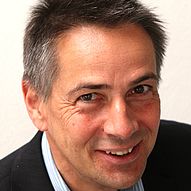
C1
Project C1
Taming Reactive Intermediates in Photocatalysis by Assembly Control
Introduction. The distance and relative orientation between a substrate molecule, to be activated for a reaction by energy or electron transfer, and the light-absorbing organic photocatalyst are crucial for the success and efficiency of photocatalytic transformations. In intermolecular reactions, such substrate-photocatalyst interactions controlling the assembly are not well defined and are rarely designed. Despite all recent achievements in applying organic photocatalysts in synthesis, the prediction of a suitable catalyst from thermodynamic data remains a challenge. Based on redox potential data from electrochemistry and excitation energies derived from optical spectra, excited state redox potentials can be estimated and used to predict the free energy of electron transfer to or from a given substrate. However, despite several organic photocatalysts fulfilling the thermodynamic criteria of a reasonably exergonic electron transfer in the excited state typically only few are competent in a given synthetic transformation. Screening of a series of photocatalysts is necessary to identify a working catalyst. The kinetics of photoinduced electron transfer (PET) or energy transfer depend on the molecular orientations of and distance between photocatalyst and reactant. This becomes particularly relevant for excited radical ions with doublet state lifetimes in the picosecond regime. A productive electron transfer cannot occur via diffusion controlled encounters and requires a preorganization of photocatalyst and reactant before excitation. Likewise, the assembly of reactants on the 2D surface of heterogeneous photocatalysts may be rate-determining for successful reactions, but little information is available. If the interactions between organic photocatalysts and reactants are better known and even become predictable, higher efficiencies and better selectivities in chemical photocatalysis with organic photocatalysts can be achieved.
Summary of the project. We aim to determine non-covalent substrate-photocatalyst interactions for several reaction types and elucidate their effect on the course of the reaction. With this insight, we will gain control over the assembly, which will be leveraged to improve the efficiency and selectivity of challenging photocatalytic transformations. We divide the project in three work packages (WPs) based on the type of organic photocatalyst and its intermolecular interaction with the substrate. WP 1 aims to control the assembly of in situ generated radical ion organic photocatalysts with substrates. In WP 2, we use anionic organic photocatalysts and their counter ions for assembly control with substrates. WP 3 focusses on photocatalyst – substrate assembly at interfaces (liquid-liquid, liquid-gas) and 2D-surfaces of heterogeneous carbon nitride photocatalysts.
Key publications
A. Chatterjee, B. König ‘Birch-Type Photoreduction of Arenes and Heteroarenes by Sensitized Electron Transfer’ Angew. Chem. Int. Ed. 2019, 58, 14289-14294.
Q.-Y. Meng, T. E. Schirmer, A. L. Berger, K. Donabauer, B. König ‘Photocarboxylation of Benzylic C-H bonds‘ J. Am. Chem. Soc. 2019, 141, 11393-11397.
M. Schmalzbauer, T. D. Svejstrup, F. Fricke, P. Brandt, M. J. Johansson, G. Bergonzini, B. König ‘Redox-neutral Photocatalytic C-H Carboxylation of Arenes and Styrenes with CO2’ Chem 2020, 6, 2658-2672.
M. Schmalzbauer, M. Macron, B. König ‘Excited State Anions in Organic Transformations’ Angew. Chem. Int. Ed. 2021, 60, 6270 – 6292.
A. Savateev, I. Ghosh, B. König, M. Antonietti ‘Photoredox catalytic organic trans-formations using heterogeneous carbon nitrides’ Angew. Chem. Int. Ed. 2018, 57, 2-14.
I. Ghosh, T. Ghosh, J. I. Bardagi, B. König ‘Reduction of aryl halides by consecutive visible light-induced electron transfer processes’ Science 2014, 346, 725-728.
I. Ghosh, B. König ‘Chromoselective Photocatalysis: Controlled Bond Activation through Light-Color Regulation of Redox Potentials’ Angew. Chem. Int. Ed. 2016, 55, 7676-7679.
J. Haimerl, I. Ghosh, B. König, J. Vogelsang, J. M. Lupton ‘Single-molecule photoredox catalysis’ Chem. Sci. 2019, 10, 681-687.
M. Giedyk, R. Narobe, S. Weiß, D. Touraud, W. Kunz, B. König ‘Photocatalytic activation of alkyl chlorides by assembly-promoted single electron transfer in microheterogenous solutions’ Nat. Catal. 2020, 3, 40-47.
I. Ghosh, J. Khamrai, A. Savateev, N. Shlapakov, M. Antonietti, B. König ‘Organic semiconductor photocatalyst can bifunctionalize arenes and heteroarenes’ Science 2019, 365, 360-366.
Application
If you are interested in joining our team as a PhD student or as a post-doc we would be happy to hear from you. Applications (single .pdf document) should typically include a letter of motivation, CV, an academic transcript of records, and contact information of two references, preferable in English. Prospective PhD students should apply exclusively to apply-crc325@ur.de. Candidates for a post-doctoral position should send their application letters to burkhard.koenig@ur.de.

